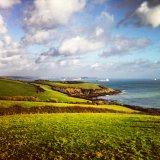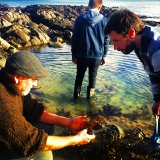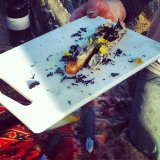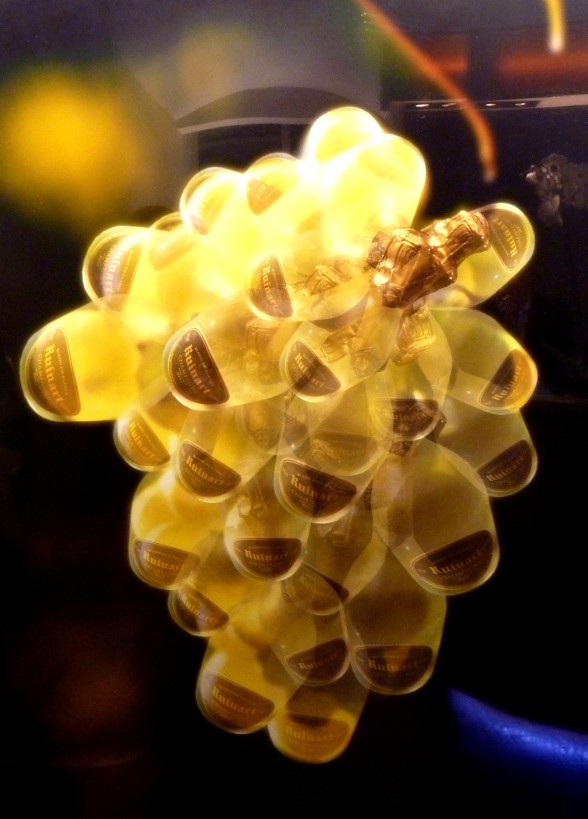It was a wonderful end to 2012 when, just as our annual closure kicked in early this month, Porthminster came away with the award for ‘Best Cafe’ at the Food Mag Readers Awards.
The team at Porthminster were over the moon to hear that readers of the magazine, which covers the whole of the South West, picked the beach cafe out in such a strong category. Runners-Up included Toast in Honiton, Bel Green in Exeter, the Duchy of Cornwall Nursery Cafe and Relish in Wadebridge.
The award recognised Porthminster Beach Cafe for its fantastic food, served in a relaxed and friendly environment. Voters also loved the way the Cafe makes the most of its stunning location, cultivating fresh herbs and vegetables in its small garden, foraging on the coastal path and championing sustainable fishing practices.
“2012 has been a great season, especially given the tough economic times,” said owner and Executive Chef Michael Smith. “We’re thrilled to win this award and we would like to thank everyone who voted for us. It’s down to the amazing team we have here, in the kitchen and out-front, and everyone behind the scenes. We have so much that is new and exciting planned for 2013 and this, along with a damn good rest, will give us a kick start!”
In its second year, the awards received thousands of votes as South West food-lovers shared their favorite places to eat, drink and shop across the region. An online voting system allowed consumers to vote quickly and easily for their best pubs, cafes, retailers, restaurants, hotels, local food and drink producers and chefs.
In the ceremony held at the Royal Albert Memorial Museum in Exeter, Hugh Fearnley-Whittingstall was named as local food hero and best chef was Emily Scott of The Harbour Restaurant in Port Isaac. Best restaurant went to Ben’s Cornish Kitchen in Marazion, and best Foodie Hotel to Watergate Bay.
After letting their hair down in the sun or snow variously, the Porthminster team will return next month, with lots in store for 2013. Watch this space!




























